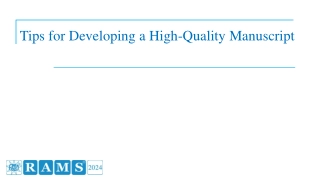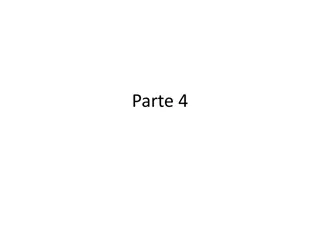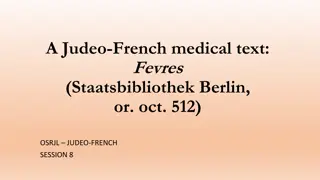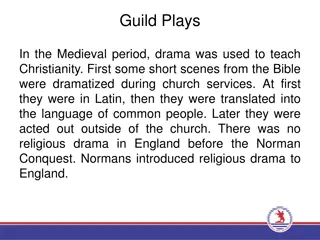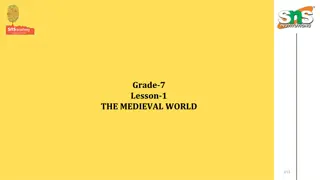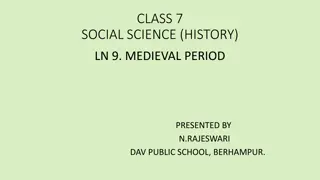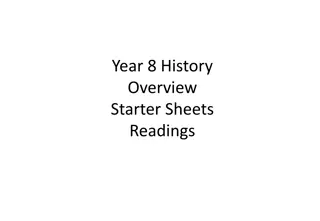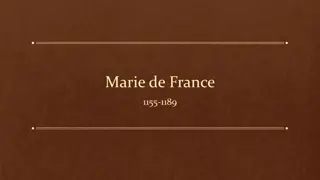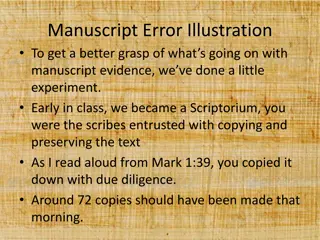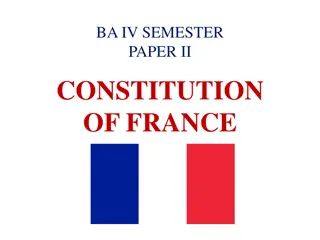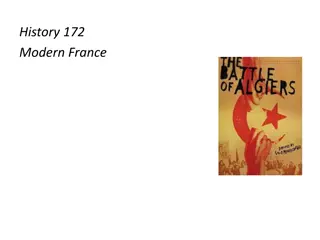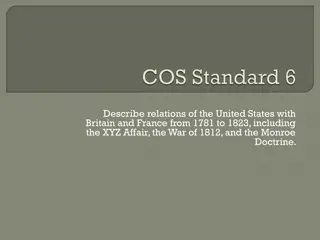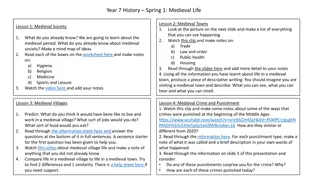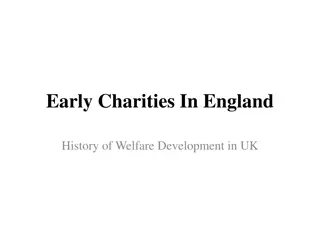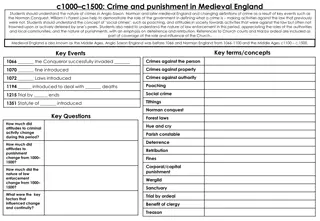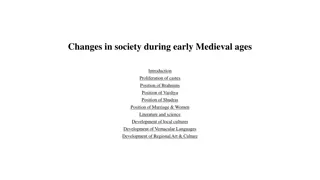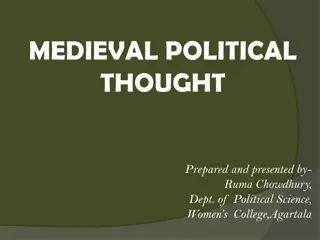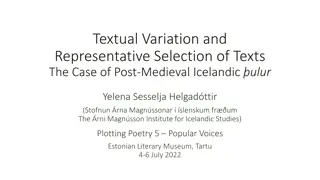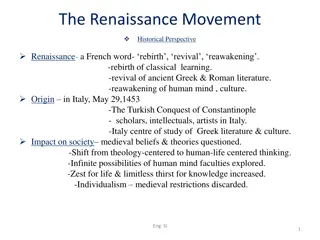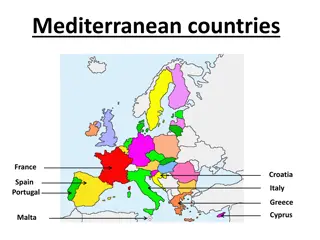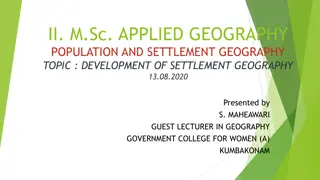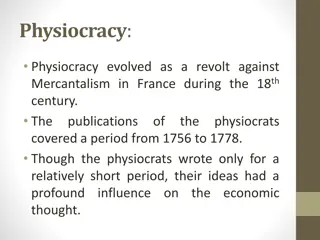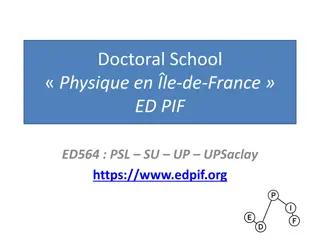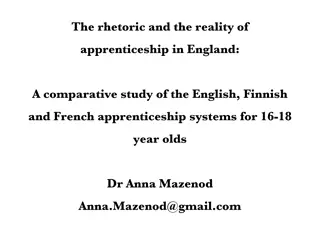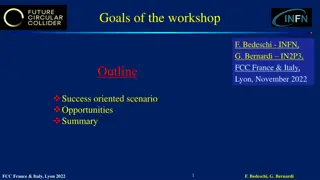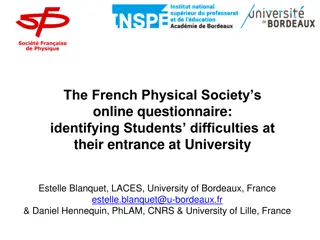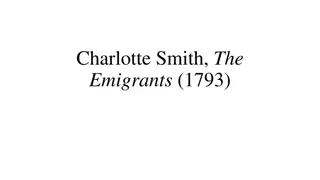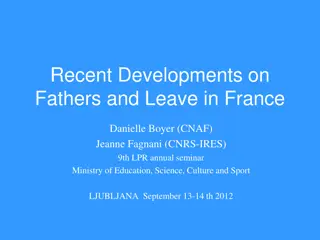Medieval Manuscript "Aucassin et Nicolette" - Bibliothèque nationale de France
An anonymous medieval manuscript, housed at the Bibliothèque nationale de France, fonds français 2168, contains the unique tale of "Aucassin et Nicolette." Likely originating from the 12th to 13th century in Picardy, the manuscript is a blend of various genres and features characters like Aucassin, a Christian noble, and Nicolette, a Saracen woman. Considered a parody, this chantefable combines poetry and prose, marking songs within its text. The manuscript is available online at Gallica, offering insights into popular literature of its time.
Download Presentation

Please find below an Image/Link to download the presentation.
The content on the website is provided AS IS for your information and personal use only. It may not be sold, licensed, or shared on other websites without obtaining consent from the author. Download presentation by click this link. If you encounter any issues during the download, it is possible that the publisher has removed the file from their server.
E N D
Presentation Transcript
Paris, Bibliothque nationale de France, MS fonds franais 2168 f. 74. (source)
Dates Dates are unknown, but likely between the last quarter of the 12th century to mid-13th century. Language comes from the Arras region of Picardy
Extant Manuscript One extant manuscript, housed at the Biblioth que nationale de France (Paris), fonds fran ais 2168. Entire manuscript scanned and available online at Gallica. Other texts in the same manuscript include 1 De l'Atre perillous ; 2 Li Vilains de Farbu ; 3 Li Lais de Eudemarec ; 4 Li Lais de Gugemer ; 5 De Lanval ; 6 De Narciso li lais ; 7 L'Aventure de Graalent ; 8 C'est d'Aucasin et de Nicolete ; 9 Li Favliaus d'infer ; 10 Li Faveliaus de quaresme et de carnage ; 11 Du Secretain , ou Li fablax du moine ; 12 Fabliau ; 13 L'Image du monde [par GAUTIER DE METZ] ; 14 Le Vie Carlemaine, si com il ala en Espaigne ; 15 Li Bestiaires, chesont les fables de pluseurs bestes , par ISOPS , traduites [par MARIE DE FRANCE] ; 16 Le Devision des quinze singnes ; 17 Li drois Bestiaires de le devine Escripture ; 18 Du Bouchier d'Abevile ; 19 Du Tort contre le tort ; 20 Lucidaires en roumans ; 21 De le vielle Truande ; 22 Li Fabliaus de Dagombert
Author & Genre Author is anonymous, but is someone very familiar with popular literature of the time, because of references to specific texts and genres throughout. For example, the second verse refers to vieil antif, the name of Roland s horse in the Chanson de Roland. Considered by many critics to be a parody of several genres including romance, epic, chanson de geste, and saint s life Chantefable: the only remaining example. A combination of poetry and prose, with lines in the manuscript marking songs.
Characters Aucassin: Christian son of the Count of Garin of Beaucaire (in the south of France, Occitanie) Nicolette: a Saracen woman sold to and adopted (and converted to Christianity) by the Viscount of Beaucaire. Saracen is used in the 12th century to refer to Muslim/Arab peoples. Names: Aucassin is the name of an 11th century Moorish king; Nicolette is a French name Other characters: the king (who gives birth to the children) and queen (who leads the army) of Torelore
Sources Dufournet, Jean. Pr face. Aucassin et Nicolette. Ed. and trans. Jean Dufournet. Paris: GF-Flammarion, 1984. 8-32. Gallica. http://gallica.bnf.fr/ark:/12148/btv1b9058947p/f74.item.r=Aucasin.zo om Wikipedia. https://en.wikipedia.org/wiki/Aucassin_and_Nicolette



